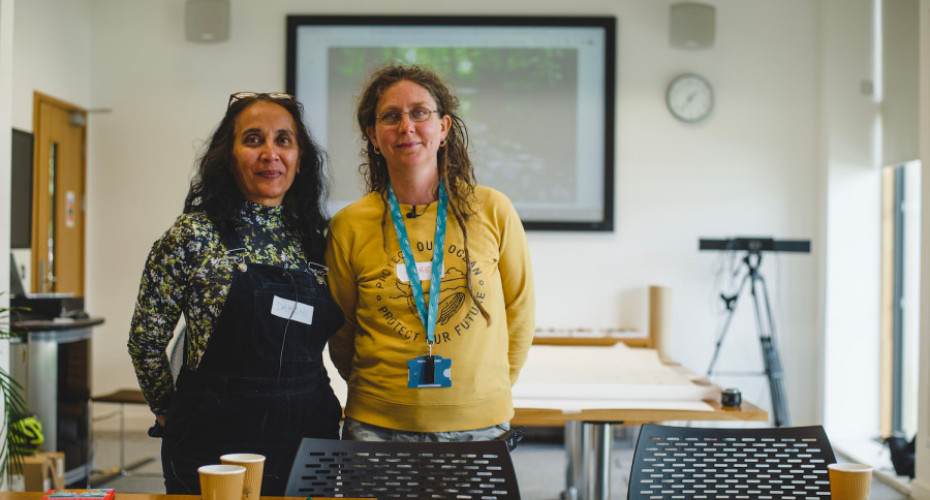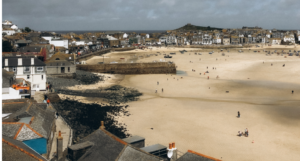Creativity helps the disempowered to highlight climate emergency concerns, study shows

Professor Clare Saunders and artist Daksha Patel. Credit: Steven Haywood
Creativity can help promote environmental justice and support the disempowered to highlight their concerns about sustainability issues, a study shows.
Art is an essential medium to help communities deal with difficult cultural, social and political issues like environmental problems and social justice, experts have found.
Bringing people together to participate in arts activities promotes knowledge-sharing and understanding of major issues affecting the environment, particularly in parts of the globe where there is less access to democracy.
Professor Clare Saunders, from the University of Exeter, and artist Daksha Patel worked with people across the world to use creativity to help them share their experiences and opinions on environmental justice.
They joined forces with University of Exeter experts in law, ecology, engineering and politics to create the online dialogue of those in the UK, Sri Lanka and Tanzania. They used photographs and drawings of different environments to prompt discussions.
The work – captured in a paper in the journal Green Humanities – inspired a short film and an art installation at the centre of the University of Exeter’s Cornwall campus.
Professor Saunders said: “We found drawing, in particular, helped people to capture the complexities of the environmental crisis. These discussions showed people had very different ideas of what environmental justice was, and this often reflected the experiences of living in different countries.”
Students and lecturers from a university in each of the countries met via Zoom to encourage Global-South-Global North and intergenerational dialogue. They discussed what environmental justice meant to them. Most said this was distributive justice – the fair exposure of poor and marginalized communities to harms from disasters, natural resource uses, and land uses.
A male Tanzanian participant commented that the voices of those suffering the most from environmental injustice are “always mute”. A British woman highlighted the importance of hearing “different forms of knowledge that different people have”.
Participants from a variety of backgrounds talked about moving environmental justice away from “us” to thinking about the broader impacts on the environment and other species.
Academics also mapped local environmental injustices. This included the key locations of tourists, local communities, landowners, industry, fishing interests, conservationists and students. Participants worked in small groups to map different types of species: invertebrates, amphibians, fauna, fungi, mammals, freshwater species, birds and marine and coastal life.
Professor Saunders said: “The exercise revealed complex entanglements of environmental injustices that are necessary for planners and policymakers to understand to develop ‘recognition’ for human and more-than-human communities. The needs of industry, fishing, conservation, tourists and locals often clash, but must be considered together in participatory contexts to develop compromises that do the least harm to all.”
Academics will now run workshops with local communities, agricultural workers, students, fisher people, conservationists, technological companies, schools, mining companies and tourists to map environmental (in)justice.
Creative mapping exercises such as this are included in the Penryn Campus’ new BA degree in Environmental Humanities and MSc in Environmental Policy and Society.



